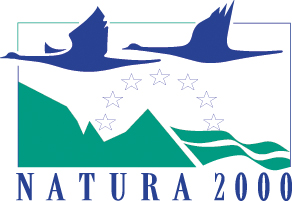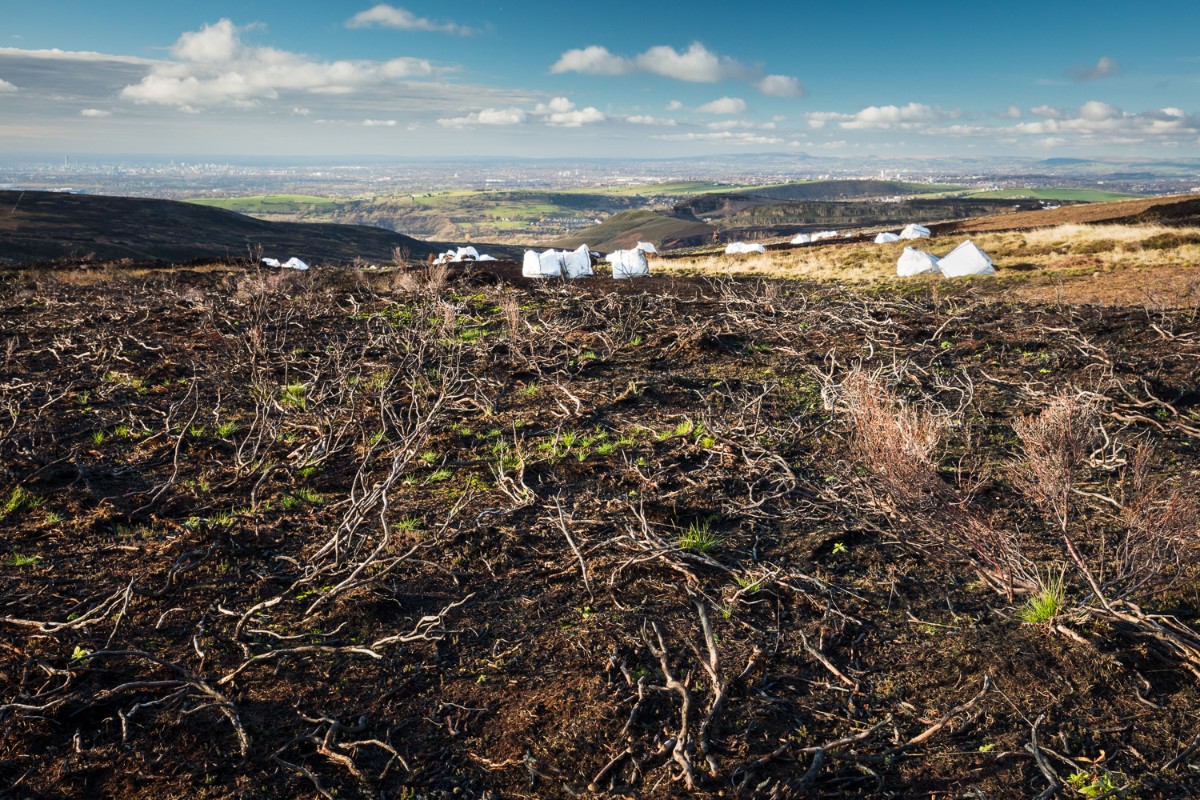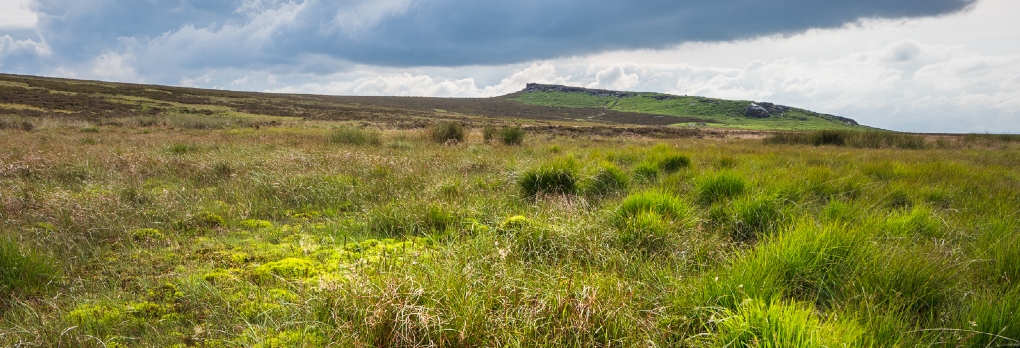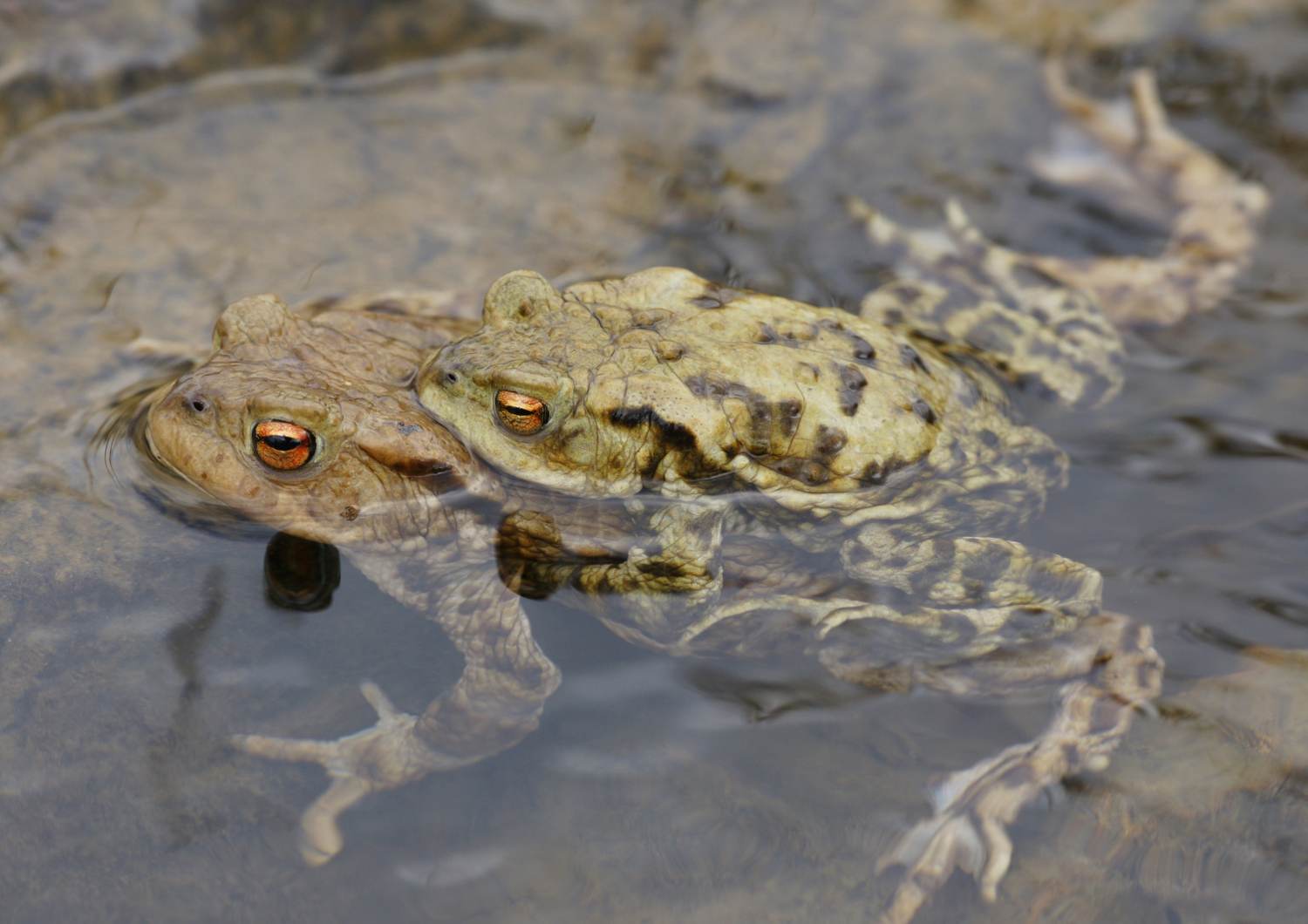Working together to bring life back to the South Pennine Moors Special Area of Conservation
This ambitious five-year project is investing €16 million to protect extensive areas of internationally important blanket bog
The project is funded by the EU LIFE programme and co-financed by Severn Trent, Yorkshire Water and United Utilities
The project is protecting the health of 95 square kilometres of active blanket bog
PROJECT START DATE: OCTOBER 2015
PROJECT END DATE: SEPTEMBER 2022
Project successes:
Conservation works
- stabilising and revegetating bare peat: 54.5ha (target was 43ha)
- installing mini-dams in drainage channels to rewet the blanket bog: 16,432 dams installed (target was 15,398)
- tackling areas of over-dominant plant species like heather by cutting dense areas and planting sphagnum (130ha of molinia, 244ha of heather, 810ha of cottongrass)
- trialling new techniques to rewet the moors (bunds)
- planting sphagnum moss, a major component of blanket bog
- controlling invasive species like rhododendron (3,38ha rhododendron, 163ha Sitka spruce, 1.9ha dense rhododendron using specialist rope access techniques)
- Planting sphagnum plug plants (over 2,959,000 plug plants covering 2565ha)
- working with over 334 land managers including 20 events, to share best practice, including lending remote controlled mower to control sward and cut fire breaks and discuss blanket bog management
- protecting the integrity of 95 square kilometres (9,500 hectares) of active blanket bog
Research and monitoring
- Used earth observation techniques monitor conservation actions from the air
- Monitored biodiversity and ecosystem service impacts of restoration
- Monitored effectiveness and efficiency of blocking peat pipes and produce best practice guidance
- Created a wildfire recording tool and database to record threats to blanket bog, creating a wildfire database
- Audited carbon budgets for the project. Current modelling is likely to show a small overall carbon benefit
- Case studies produced on creating a positive carbon impact through moorland restoration, and estimating carbon emitted from a wildfire
- Monitored socio-economic impacts of the project
Communications and engagement
- Created a new website and engaged with stakeholders through regular social media posts including the #BeFireAware campaign
- Created 7 project videos
- Bogfest - a 3-day festival-style conference in the moorland environment attended by 450 people
- 5 webinars
- Laymans report
- Networking with other projects including visits from Latvia and Lithuania
- Bogtastic and Fire Aware engagement with over 12,000 people at 145 events, plus 50 talks, 25 walks and 9 Bogtastic webcasts to replace face-to-face engagement during the pandemic
- Bogtastic play, Bogtastic trump cards and Moor Apps, Protect our Moors leaflet
- Established Edale Moorland Junior Rangers, delivered on-site conservation to 11 youth groups and 8 school groups
- Produced a video for the Youth Climate Summit and an online meet between Junior Rangers and a school in Colombia
Keep up to date with the latest news about the MoorLIFE 2020 project.
Read the reports and papers produced as part of MoorLIFE 2020
MoorLIFE 2020 conservation works
Read more about the conservation work being undertaken as part of the MoorLIFE 2020 Project
Works completed under MoorLIFE 2020
Using scientific evidence to promote best practice
We use extensive scientific research and monitoring to back up our conservation work.
- setting up field labs to monitor what happens to things like water quality and storm flow when we try various interventions, like planting sphagnum
- using aerial imagery to carry out landscape-scale remote sensing to create a map that shows the vegetation cover
- producing a carbon audit report to measure the carbon emitted through our conservation work against the carbon that will be stored by the repaired blanket bog
- monitoring the socioeconomic impact of the project
- creating a database to record moorland wildfires in the area
MoorLIFE 2020 research and monitoring
Find out more about the research and monitoring being undertaken as part of the MoorLIFE 2020 Project
Our pioneering programme of communications and community engagement has seen us:
- develop the first ever ‘moor in a van’; our Bogtastic Van visits communities surrounding the Peak District and South Pennines
- develop a national wildfire recording tool to allow the wildfire-fighting community to record their fire data in a single place, an initiative that aims to increase our evidence base of how blanket bogs reduce the risk of wildfire
- hold and participate in conferences and seminars including BogFest 2017 which brought together nearly 300 experts on peatlands from across the globe
- start a junior ranger group in Edale to inspire a new generation of conservationists
MoorLIFE 2020 Communications
Find more about the how MoorLIFE 2020 is encouraging people to value and love their bogs
Our funding and delivery partners
The project is delivered by the Peak District National Park Authority as the lead and accountable body (the Coordinating Beneficiary).
On the ground delivery is being undertaken largely by the Moors for the Future staff team with works also undertaken by the National Trust High Peak and Marsden Moor Estate, the RSPB Dove Stone team and Pennine Prospects (the Associated Beneficiaries). Funded by the EU LIFE programme and co-financed by Severn Trent, Yorkshire Water and United Utilities. With advice and regulation from Natural England and the Environment Agency, and local advice from landowners.
The €16 million project will receive €12 million funding from the EU LIFE programme, the largest ever award to a UK nature conservation project. It is co-financed by Severn Trent, Yorkshire Water and United Utilities.
Funded by




